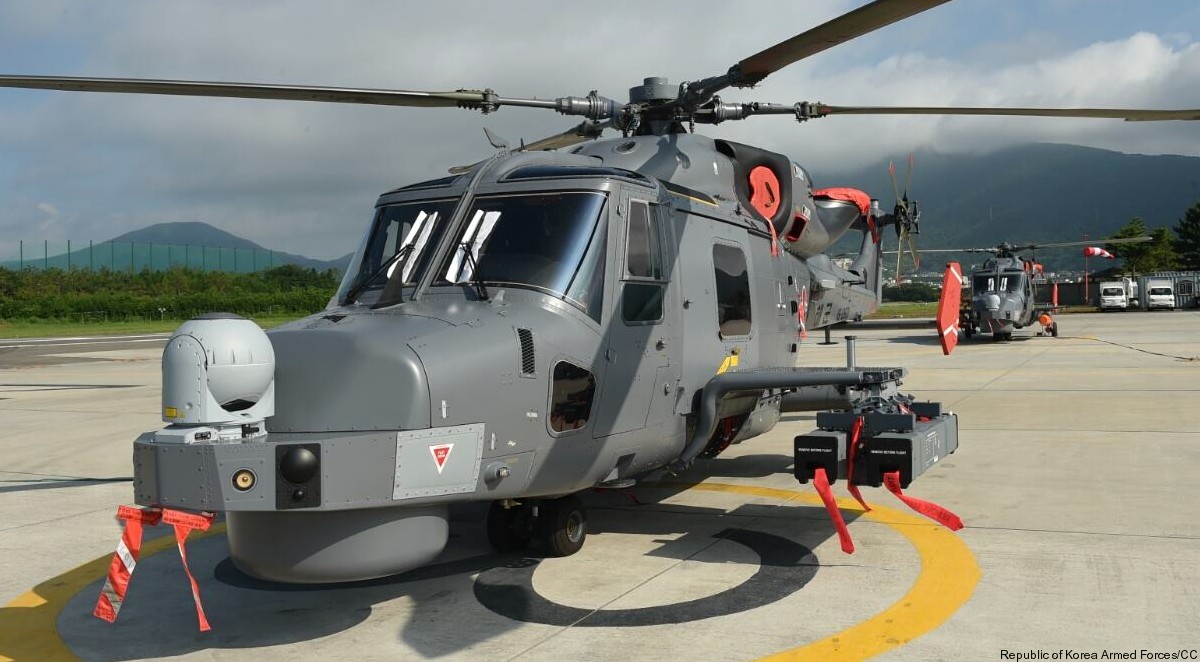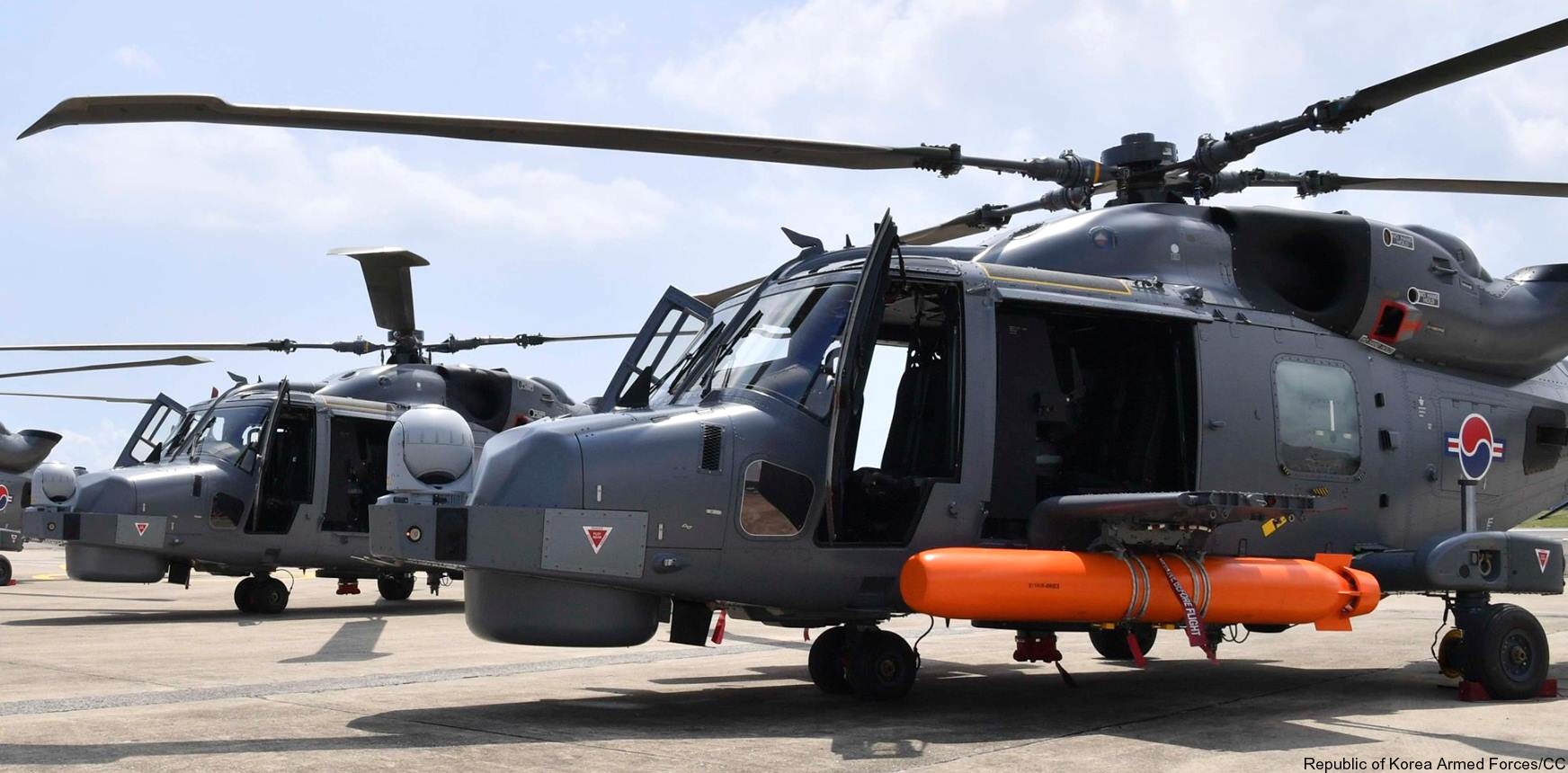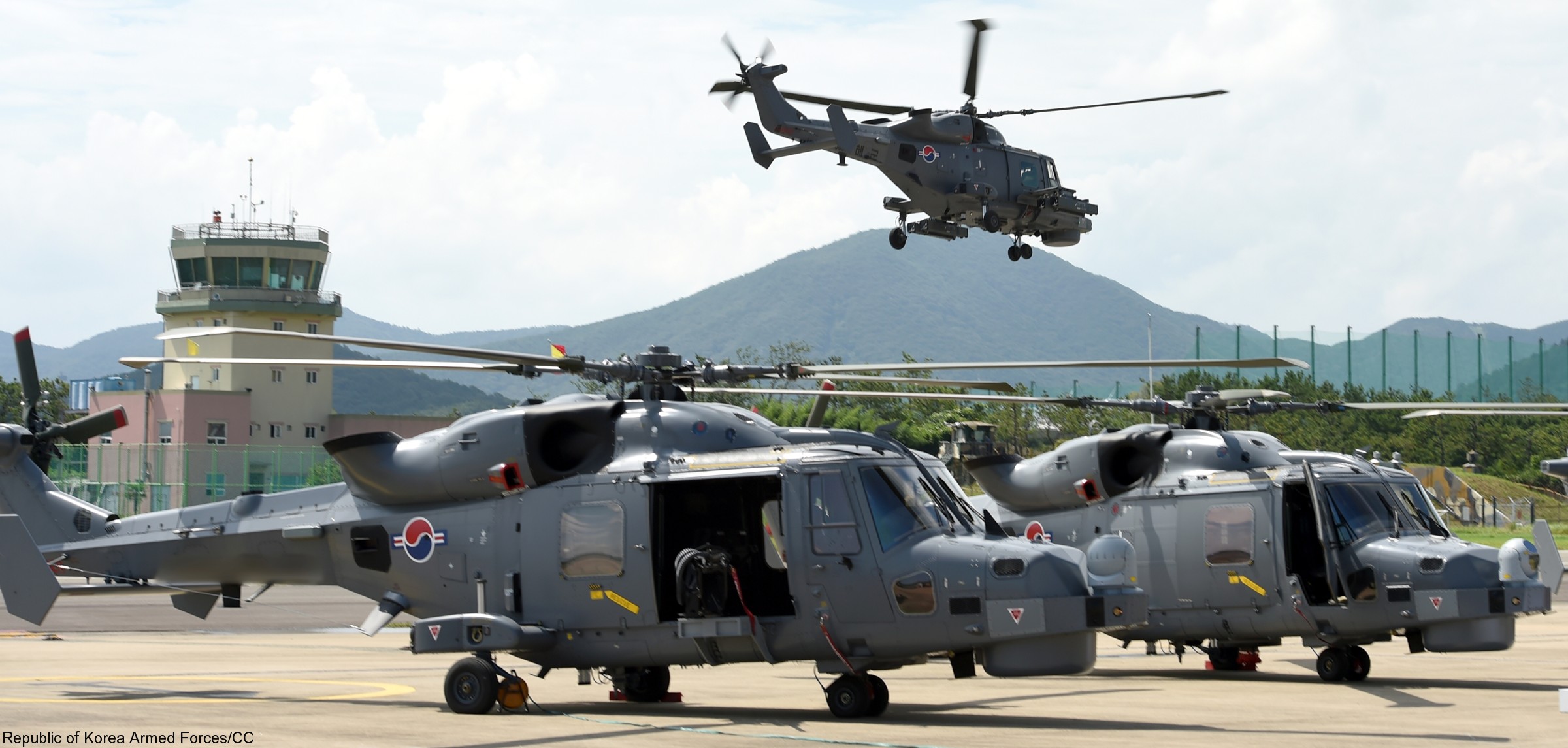|
|
|
HOME
|
US Navy -
ships
|
US Navy - air
units
|
USMC - air
units
|
International
Navies
|
Weapon Systems
|
Special Reports |
|
Republic of Korea Navy - ROKN AgustaWestland AW159 Wildcat |
 |
|
|
| Description: |
|
The AW159 Wildcat is a further
development of the Westland Lynx. While the AW159 shares broad
similarities in appearance to the Lynx, it has significant design
differences and is heavily modernised and adapted to gain new
attributes and functionality. The AW159 comprises 95% new
components; the remaining 5%, consisting of such items as the fuel
system and main rotor gearbox, are interchangeable with the Lynx AH7
and HMA8 variants. During development, the Army and Navy variants of
the Wildcat reportedly maintained 98 per cent commonality with one
another. The AW159 is the first helicopter by AgustaWestland to be
designed inside an entirely digital environment. Among other
changes, certain external elements of the Wildcat, such as the tail
rotor, have been redesigned for greater durability and stealth
qualities. Both Army and Navy variants have a common airframe, which is manufactured by GKN Aerostructures; the airframe has been marinised for operations in the naval environment and provides for a greater airframe lifespan of 12,000 flight hours. The wheeled undercarriage is also strengthened for naval landings on both variants. The AW159 is powered by two 1,362 hp (1,016 kW) LHTEC CTS800 turboshaft engines which drives the rotorcraft's BERP IV rotor blades via a new transmission, increasing the maximum take-off weight by more than 1 ton over the legacy Super Lynx. It is equipped with a new composite tailboom, tailplane, tail rotor, nose structure and avionics suite. The naval version is also equipped with a SELEX Galileo Seaspray 7000E active electronically scanned array (AESA) radar and L-3 Wescam MX-15HDi electro-optical/infrared nose turret. A glass cockpit comprises the primary human-machine interface, using four 255 x 200mm multifunction displays to provide information to the aircrew and interact with the avionics systems on board. The Wildcat featured an increased payload and range over the preceding Super Lynx; it is operationally required to carry up to 8 Future Anti-Surface Guided Weapons up to 185 kilometers from a host ship and remain on station for up to an hour. The type can perform aerial reconnaissance, anti-submarine warfare (ASW), anti-surface warfare (ASuW), utility, fire control, command and control, and troop transport duties. In these varied mission roles, a range of munitions can be used. In June 2014, the Royal Navy awarded Thales Group a £48 million contract to deliver the Lightweight Multirole Missile (Martlet) for the Wildcat under the Future Anti-Surface Guided Weapons Light (FASGW (L)) programme for targets such as small boats and fast attack craft. A Wildcat can carry four launchers each with five Martlets. In March 2014 a contract was awarded to MBDA for the Sea Venom (FASGW Heavy) missile for use against vessels and land targets, replacing the Sea Skua. Both missiles are being integrated by AgustaWestland in a single £90m programme by 2018, with IOC for both planned by October 2020. Many elements of the AW159's avionics are provided by Thales Group. The type is reported to possess significant ISTAR capabilities and improved situational awareness, achieved through its onboard integrated digital open systems architecture; it has been equipped with the Bowman communications system, allowing for data such as targeting and voice communications to be securely and seamlessly transmitted to friendly forces. Some AW159 models have been fitted with various General Dynamics-built mission systems, these include secured data recorders and tactical processing systems which integrate sensor data and application information for displaying within the cockpit as well as for retention within encrypted data storage. Other mission systems used on the Wildcat have been produced by BAE Systems. All variants of the Wildcat share the same defensive aids arrangement, which shares some commonality with the AgustaWestland Apache; features include missile warning sensors, countermeasures dispensers, and infrared exhaust suppressors. On 15 January 2013, South Korea's Defense Acquisition Program Administration (DAPA) announced the selection of the AW159 to fulfill a requirement of the Republic of Korea Navy for a maritime helicopter, winning out against the MH-60R Seahawk. The batch of eight aircraft were chosen to perform search-and-rescue missions, anti-submarine warfare and surveillance. In January 2014, DAPA announced it will equip its Wildcat helicopters with Spike NLOS missiles to provide a stand-off attack capability for engaging targets such as ground artillery and small vessels. In April 2015, the South Korean government was considering ordering a further 12 Wildcats to further strengthen the Navy's anti-submarine capabilities; alternative options include the MH-60 Seahawk and the domestically produced KAI KUH-1 Surion helicopter. On 13 June 2016, the Republic of Korea Navy took delivery of four Wildcats, after some unspecified initial delays. The helicopters operate from the Navy's Incheon-class guided missile/coastal defense frigates. The remaining four were delivered in late November 2016. ROK Navy Wildcats are fitted with a Seaspray 7400E radar offering 360-degree coverage. The first four AW159s were operational by February 2017. Its AESA radar and electro-optic thermal sensor are capable of detecting surface contacts out to 360 km (220 mi; 190 nmi). For anti-submarine duties, the helicopter can operate for over three hours when equipped with the Thales FLASH dipping sonar, two hours with the sonar and one Blue Shark torpedo, and an hour or more with the sonar and two torpedoes; it can also drop sonobuoys. Specifications (AW159): Manufacturer: AgustaWestland (now Leonardo) Crew: 2 pilots Capacity: 6 passengers, including door gunner Length: 15.24 m (50 ft 0 in) Height: 3.73 m (12 ft 3 in) Empty weight: 3,300 kg (7,275 lb) Max takeoff weight: 6,000 kg (13,228 lb) Powerplant: 2 x LHTEC CTS800-4N turboshaft, 1,015 kW (1,361 hp) each Main rotor diameter: 12.8 m (42 ft 0 in) Main rotor area: 128.7 m2 (1,385 sq ft) Performance: Maximum speed: 311 km/h (193 mph, 168 kn) Range: 777 km (483 mi, 420 nmi) Ferry range: 963 km (598 mi, 520 nmi) Endurance: 2 hr 15 min (4 hr 30 min with auxiliary fuel tanks) Armament: missiles torpedoes door gun source: wikipedia |
|
|
| images |
  |
|
|
seaforces.org
|
Republic of Korea
Navy start page
| |
